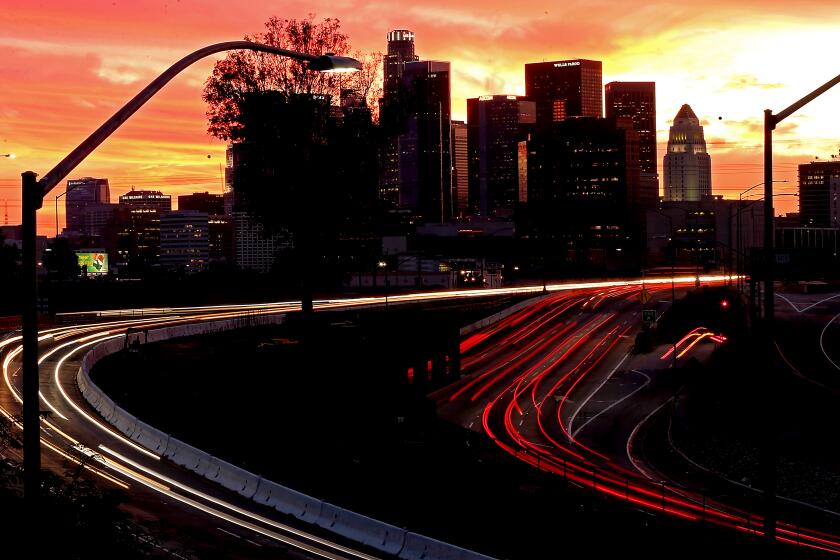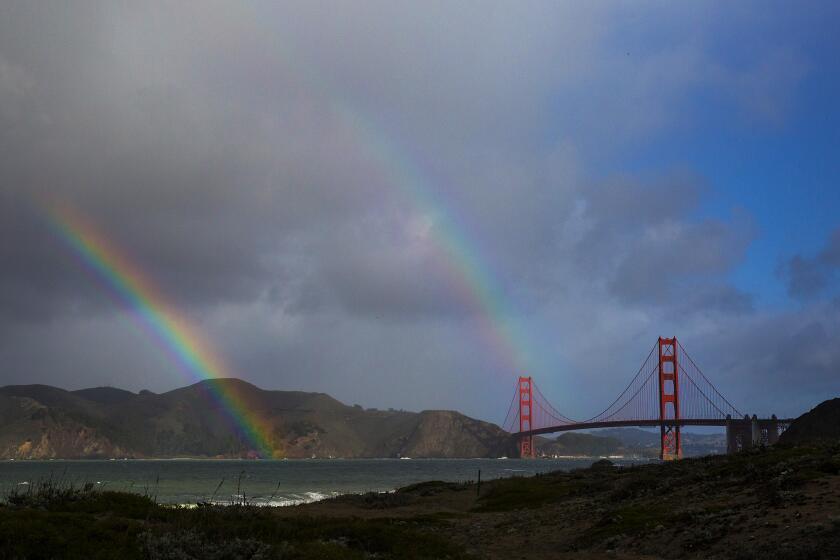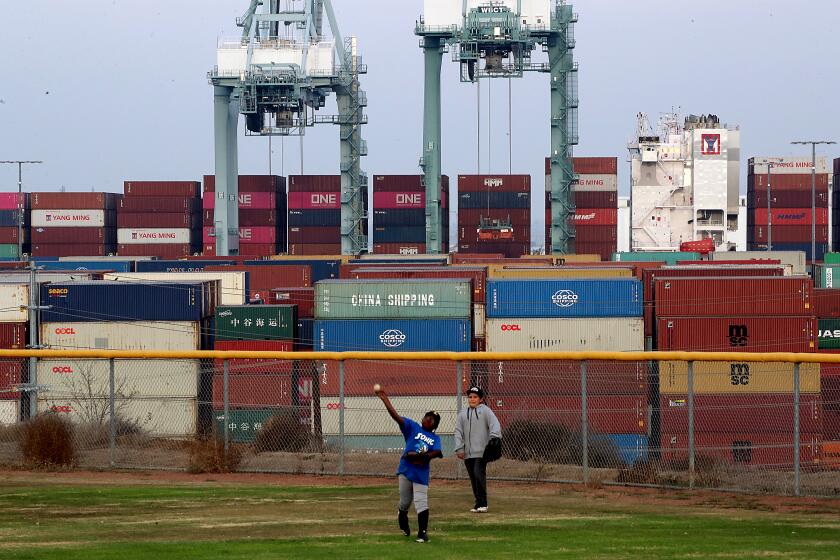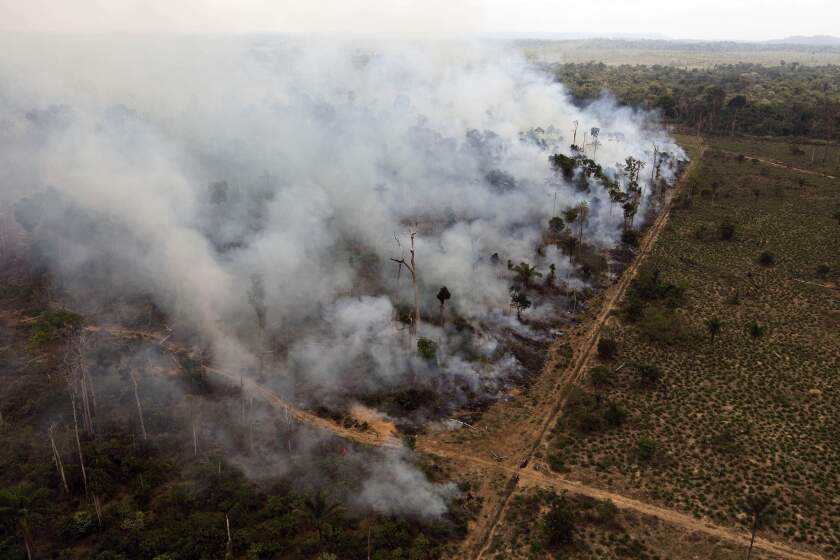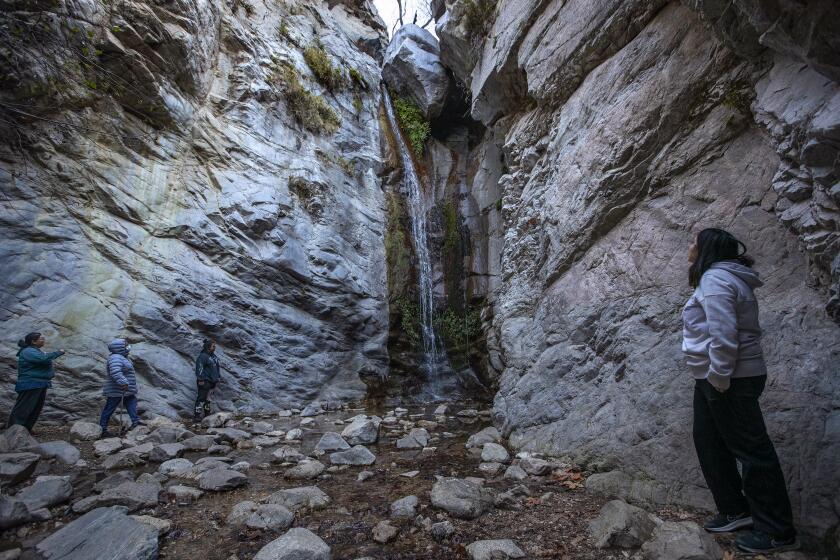Editorial: SoCal air quality officials haven’t acted to cut port pollution. They escaped to a desert resort instead
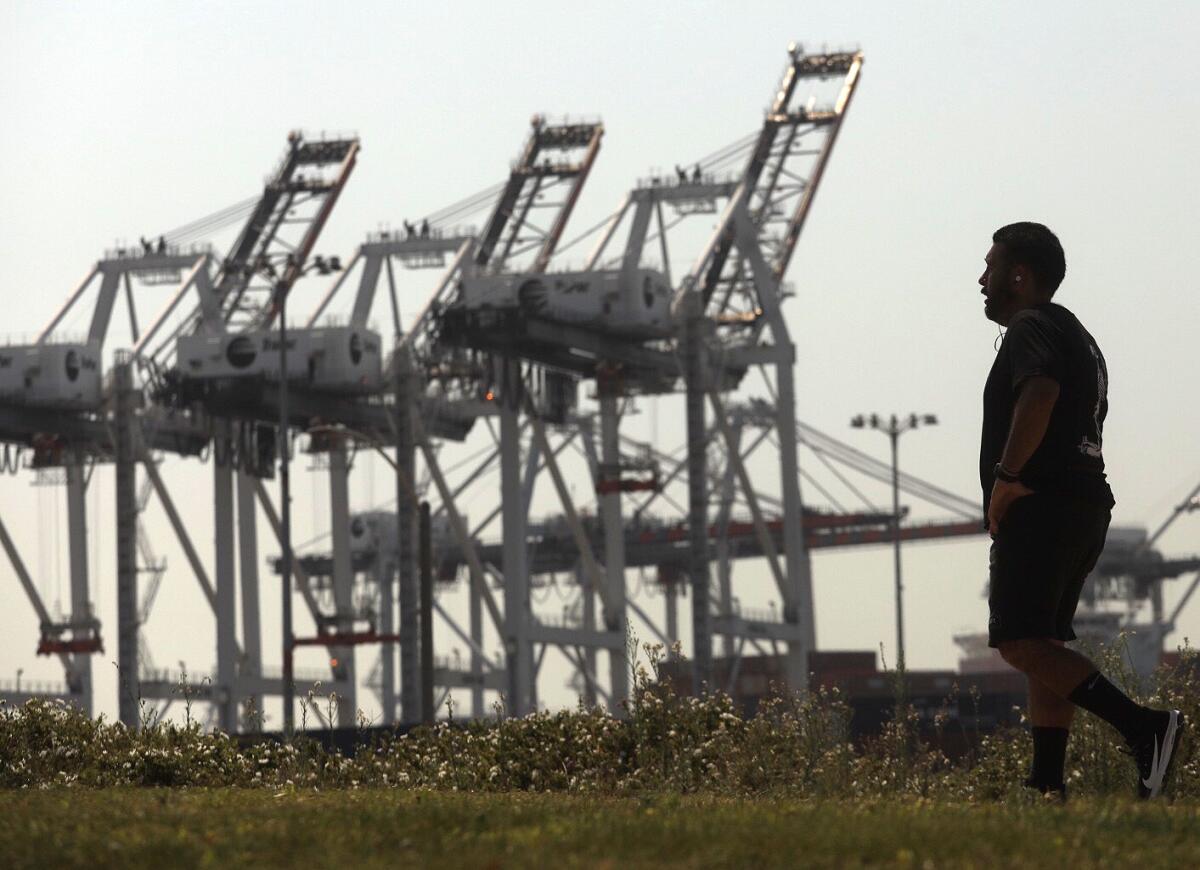
- Share via
Next time you take in Southern California’s notoriously hazy skies and dirty air, remember that smog regulators still aren’t using their power to crack down on the region’s biggest polluters.
Year after year the South Coast Air Quality Management District’s governing board has chosen to delay and waste time in fruitless talks rather than impose regulations to curb diesel emissions from cargo-moving trucks, ships, trains and equipment at the Los Angeles-Long Beach ports. Together, the publicly owned ports are the largest single source of smog-forming pollution in the nation’s smoggiest region.
L.A. has ambitious climate goals, and deadlines are just around the corner. Officials should be redoubling efforts, not making excuses for why they can’t be met.
Last week, board members did it again. They held a retreat with one day devoted to port pollution at a Rancho Mirage resort — more than 100 miles from the harbor communities most harmed by the agency’s failure to act. And there’s still no guarantee the board will vote this year to enact long-delayed regulations to clean up the ports.
AQMD Board Chair Vanessa Delgado defended the retreat at the Westin Rancho Mirage Golf Resort & Spa as a “learning session.” Air district officials argued it could help build support for rules. The board has long failed to advance them because of powerful industry interests and labor unions that oppose regulation. But it’s a bad look for board members to escape to a no-action retreat far removed from the residents and advocates who have been clamoring for cleaner air.
A proposal in the California Legislature would put a “green amendment” on the November ballot to add the rights to clean air, clean water and a healthy environment to the state constitution. The people should have their say.
Anyone could have attended the public meeting, which was the AQMD’s annual retreat for its 13-member board of local officials from Los Angeles, Orange, Riverside and San Bernardino counties. Industry lobbyists and port staff were there in person to hobnob and make their case. But there were few community members present at the board’s session Thursday, which was held in a chandeliered ballroom and followed by a reception with passed hors d’oeuvres in an adjacent courtyard.
Port pollution degrades air quality far inland, but hits hardest in communities of color in harbor-area neighborhoods that suffer higher rates of asthma, cancer and other life-threatening illnesses. Over hours of presentations and expert panels, board members heard about the thousands of emergency room visits for asthma, the heart attacks and the early deaths that could be avoided if the region could slash pollution. They also heard about the challenges in deploying cleaner tugboats, locomotives and cargo ships, hydrogen fueling and electric charging stations.
A court ruling against the Port of Los Angeles over failed promises to clean the air at its China Shipping terminal shows why we need government regulation, not pledges.
Representatives of the Port of L.A. and the shipping industry, who attended in person and spoke during public comment, focused on how challenging and costly it will be to install zero-emission technology and how much better it would be for the agency to collaborate than to regulate. A lawyer with an environmental group, who followed the meeting remotely, pushed for strict rules to address the “public health crisis.”
Delgado ended the five-hour meeting Thursday with remarks that suggested she’s reluctant to impose more regulations on the ports when it will be hard enough for them to meet their existing obligations. But in an interview later, she said she’s committed to adopting a rule by the end of the year that will be “very action-oriented, to have specific projects, to have more tangible, measurable goals that we can actually implement.”
Some members, including Riverside Mayor Patricia Lock Dawson and Los Angeles County Supervisor Holly Mitchell, voiced optimism about moving forward. Still others pointed to the challenges with fueling infrastructure, electrical grid demands and jobs impacts as reasons to keep delaying action.
The Low Carbon Fuel Standard encourages use of renewable diesel from biomass. But it could encourage deforestation for energy crops such as soybeans and canola.
“We’re not ready,” said Lynwood Mayor José Luis Solache.
Among those who couldn’t make the trip to Rancho Mirage was Theral Golden of the West Long Beach Assn., a community group who has long pushed the ports, AQMD and other local agencies to clean the air in his port-adjacent neighborhood. In an interview, he asked why the air board didn’t meet closer to the communities affected and why a retreat was needed.
“They need to do the right thing and get relief to these children that grow up going back and forth to hospital with asthma that’s directly related to the impacts of the pollution,” Golden said.
There are three more proposals, including the Chuckwalla Mountains, to add to California’s national monuments. Biden should act on them before his first term is up.
Two people have outsize power to change this: L.A. Mayor Karen Bass and Long Beach Mayor Rex Richardson.
Their predecessors in 2017 set important targets to switch to pollution-free equipment at the ports by 2030 and trucks by 2035, but that transition has scarcely begun. Of the 16,000 active trucks serving the ports today, only about 300 are zero-emission electric or hydrogen fuel cell models. More than 90% of the equipment at the Port of L.A., and 80% at Long Beach, still runs on diesel and other fossil fuels, according to their latest inventories.
The city-owned ports, whose leaders answer to the mayors, have long opposed regulation by the AQMD, and there have been no outward changes in that under Bass or Richardson. Both mayors need to change course quickly to meet their own clean-air plans and climate goals.
The U.S. Environmental Protection Agency’s move earlier this year to reject California’s plan to clean ozone, the invisible, lung-searing gas in smog, means the region could be slapped with tough federal penalties, including stringent new permitting requirements, fees for businesses and the loss of billions of dollars in highway funding. If the ongoing health damage isn’t compelling enough for Bass, Richardson and the AQMD board to act, maybe the threat of economic disruption before L.A. hosts the 2028 Olympics will be.
It must be nice for air-quality board members to escape for a few days to a resort with lush grounds, sparkling pools and crisp views of the San Jacinto Mountains. But clean air is a luxury most people in the diesel-choked communities of Wilmington, West Long Beach and the 710 corridor still don’t enjoy.
Enough with the idle workshopping, aimless talks and leisurely retreats. It’s time for regulators to do their job and adopt the strongest possible rules on port pollution by the end of this year.
More to Read
A cure for the common opinion
Get thought-provoking perspectives with our weekly newsletter.
You may occasionally receive promotional content from the Los Angeles Times.
